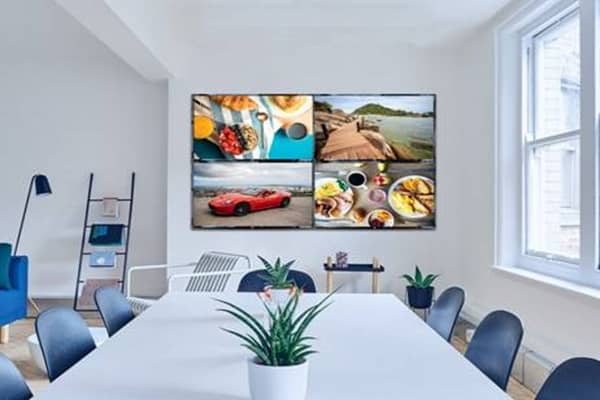What is AV technology?
Audio visual (AV) technology uses various tools and equipment that enhance communication, collaboration, and overall business functionality. It integrates audio and visual components to create an immersive experience.
Some of the main components of this technology include projectors, screens, speakers, microphones, and video conferencing systems. These elements create an environment where people can experience information instead of reading it. For example, a business presentation can now use multimedia elements to captivate and engage the audience.
Contents
The main benefits of AV technology include:
- Improves presentations and training
- Reduces travel expenses through virtual meetings
- Enhances customer service
- Integrates with emerging technologies like AI and IoT
- Boosts overall productivity by saving time
AV technology and communication
Video conferencing eliminates geographical boundaries. This allows teams to interact with one another, even if they live far away. High-definition video and audio create an immersive experience for team members, which creates a sense of presence even in virtual meetings.
These software tools enhance the quality of your meetings and strengthen team bonds by adding a human touch to digital interactions. If one of your goals is to enhance collaboration or conduct more remote work, AV technology can help you reconnect with your employees.
Moreover, AV technology introduces screen sharing and real-time document collaboration. These features increase the efficiency of communication. Whether it’s brainstorming ideas or refining project details, these features also empower teams to work together in real time. This reduces delays associated with traditional communication methods.
Enhancing presentations and training
Video wall multi-screen displays are dynamic displays that transform regular presentations into immersive experiences. They accommodate large audiences and allow for diverse content formats. From interactive graphs to 3D models, these displays offer trainers a versatile way to convey complex ideas.
These displays also have an impact on presentations. You can engage your audience with compelling visuals that span multiple screens, providing a panoramic view of your message. Businesses that want to present information more effectively can use AV technology to do that.
Whether you’re promoting a new product or presenting quarterly results, the use of video wall multi-screen displays elevates the experience. These displays leave a lasting impression on clients, stakeholders, and employees.
Remote collaboration and global reach
Video conferencing tools have changed the way teams connect across time zones. Features such as screen sharing, document editing, and interactive whiteboards bridge the gap between team members. This makes them feel as if they are in the same room even when they live in another country.
Customer engagement and experience
AV technology can enhance customer engagement and experience. It can transform traditional storefronts into immersive spaces, which could captivate the attention of potential buyers.
Moreover, virtual events powered by AV solutions create opportunities for businesses to connect with a global audience.
Incorporating audio visual elements into customer interactions brings a human touch to digital transactions. Video chats, interactive voice prompts, and virtual concierges powered by AV technology redefine online customer service, providing a richer and more personalized experience.
Also read: How To Choose the Right Enterprise Search Software for Your Business
Integration with IoT and smart spaces
Businesses and individuals engage with their surroundings differently in smart spaces. For example, a conference room could automatically adjust lighting and temperature based on the occupancy. This enhances energy efficiency and provides a more comfortable and productive environment for meetings.
IoT-enabled devices can also sync with AV equipment, which allows for intuitive control and automation. Your business can use IoT and smart devices to automate tasks and encourage employees to be more productive.
Cost-benefit analysis of AV implementation
The integration of AV technology into a business environment is an investment that requires your thoughtful evaluation of costs and benefits. Initially, there might be a capital cost for acquiring AV equipment and implementing the necessary infrastructure. However, the long-term advantages often outweigh these expenses.
Consider the efficiency gains achieved through streamlined communication and collaboration. AV technology reduces time constraints, enabling quicker decision-making processes and boosting overall productivity. Additionally, virtual collaborations and events can reach a wider audience and create new revenue opportunities.
Aside from acknowledging the upfront costs, long-term savings are equally important to consider. You can achieve a positive cost-benefit ratio through reduced travel expenses, improved operational efficiency, and enhanced customer engagement.




